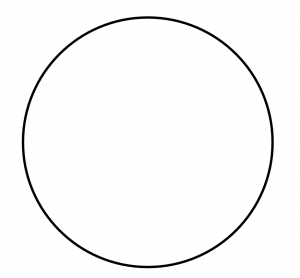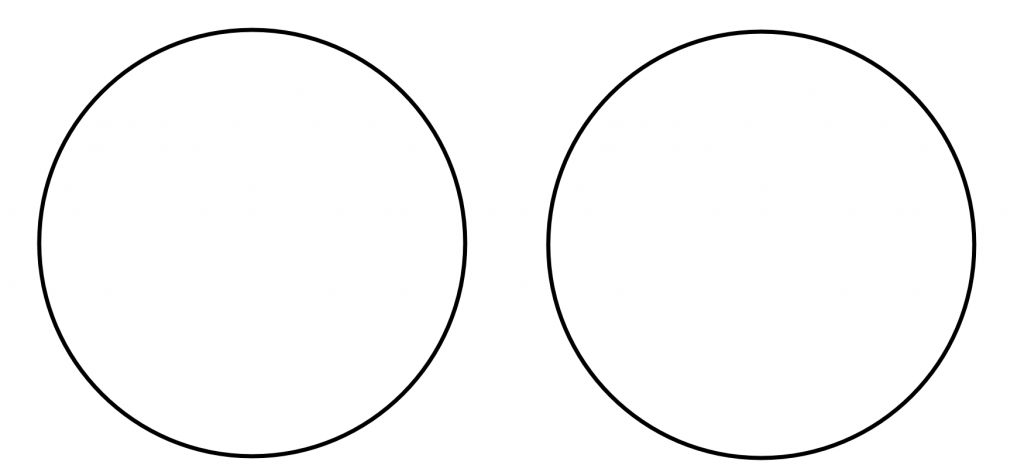3.3. Earth’s Interior – Review Questions
- Draw a schematic cross-section diagram through the Earth using the circle below. Label each layer, identify whether it is liquid or solid, and note what elements are most abundant in each layer.

- How do the densities of the materials (in the rocky or liquid layers of the Earth) vary as you move from the surface of the Earth to the centre of the Earth? How does this relate to the composition of each layer and sublayer?
- How homogeneous are the different Earth layers?
- Draw a cross-section through the crust and label the different parts. How does the density of the rock vary across the different kinds of crust (continental and oceanic)?
- How does the depth of the Moho differ between continental and oceanic lithospheric plates?
- Describe the process of isostacy and give examples of locations where isostacy is occurring on Earth today.
- Draw two cross-sections of the Earth including the layers of the Earth, with an earthquake focus near the surface of the Earth.
- Draw the pattern of P waves that extends from the earthquake focus through the layers of the Earth.
- Draw the pattern of S waves that extend from the earthquake focus through the layers of the Earth. Label the shadow zones for each.
Extra review questions that may be covered in lecture (depending on your professor) that are not completely covered in the the textbook readings:
- What shape is the Earth? How does its shape vary on a global scale? If you travelled from one side of Canada to the other, how does the surface of the Earth vary, in terms of topography?
- Where on Earth do we find mantle plume hotspots? Google image search for these places and compare the way the rocks and volcanic eruptions and features look in these places. What similarities do you see?


